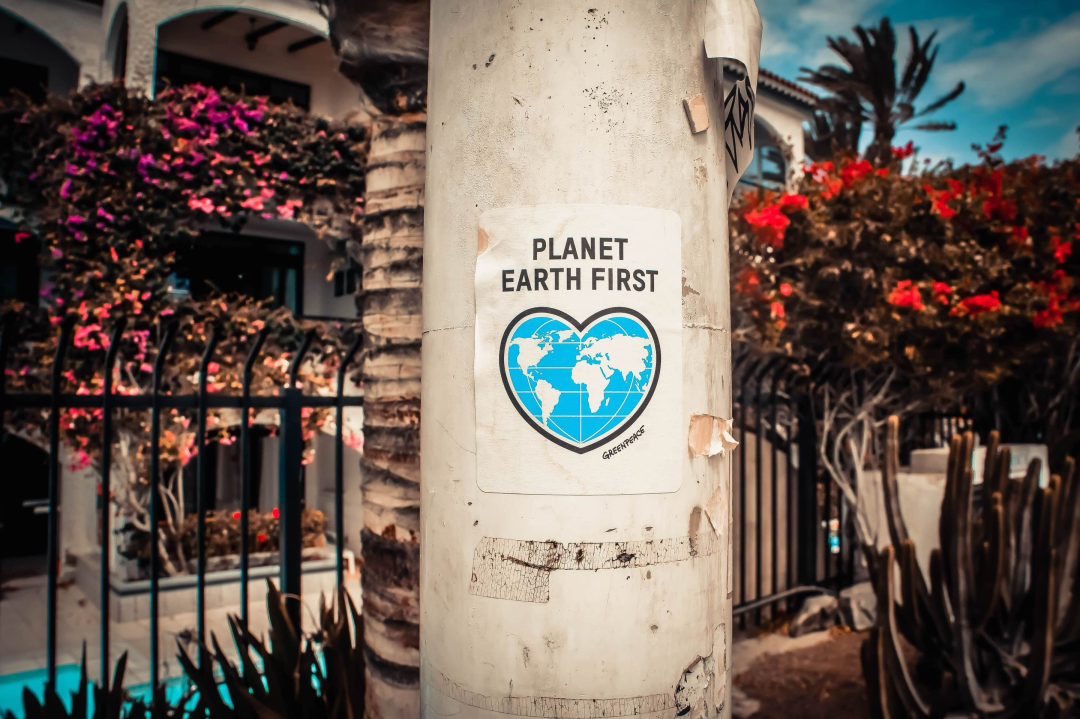April 22nd each year is World Earth Day.
Image source:UNSPLASH/Markus Spiske
Lindsey Ricker
Head of Strategic Planning at the World Economic Forum's Center on Nature and Climate
Hanh Nguyen
Head of the Ocean Industry at the World Economic Forum
Every year on April 22, it’s World Earth Day—a global day that serves as one of the largest environmental protest events in the world.
This year's Earth Day theme is "Global Fight Against Plastic," with activists calling for a 60% reduction in plastic production by 2040.
According to the World Economic Forum's "Global Risks Report 2024," half of the top 10 global risks over the next decade are environmental in nature.
World Earth Day is an international day dedicated to protecting the planet. It inspires people to care about the environment and promotes environmental conservation and sustainable development.Every year on April 22, around 1 billion people worldwide take action to raise awareness about the climate crisis and inspire behavioral changes that help protect the environment.Earth Day offers a variety of participation opportunities, from small-scale activities like growing herb gardens at home or in classrooms to picking up litter. People also spontaneously join in tree-planting initiatives, other eco-friendly projects, or even street protests focused on climate change and environmental degradation.Official Earth Day events and initiatives aim to enhance public environmental awareness and bring together like-minded individuals or groups to tackle deforestation, biodiversity loss, and other pressing challenges.This year's Earth Day theme is "Global Fight Against Plastic," highlighting the threat plastics pose to human health. Activists are calling for a 60% reduction in plastic production by 2040.From April 23 to 29, 2024, governments and non-governmental organizations from around the world will gather in Ottawa to continue negotiations on the terms of the United Nations Global Plastics Treaty.On April 22, 1970, millions of people in the United States took to the streets to join a massive protest against the destruction of Earth and its resources.During the protests, demonstrators blocked New York's usually bustling Fifth Avenue, while students in Boston staged a "death protest" at Logan Airport, lying motionless on the ground in simulated death poses to express their dissent.At the time, the environmental impact of the post-war consumer boom was beginning to become evident. Oil spills, factory wastewater discharges, and other ecological threats were steadily escalating—yet virtually no legislation existed to address or prevent them.World Earth Day has become a global environmental protest movement.
Image source: Unsplash
Protesters from all walks of life across the U.S.—representing roughly 10% of the American population—have voiced their demand for sustainable change. The official website describes this protest as the event that marked the birth of the modern environmental movement on Earth Day.Concerned about the growing environmental damage, Wisconsin's junior senator, Gaylord Nelson, proposed in 1969 that "teach-ins" be held on college campuses across the U.S. to raise awareness of environmental threats.Nelson, along with Congressman Pete McCloskey and activist Denis Hayes, organized the seminar. They quickly realized that the event could broaden its impact, drawing in audiences beyond just students.After being renamed "Earth Day Protest," the event drew nationwide media attention and garnered support from approximately 20 million Americans spanning a wide range of ages, political affiliations, professions, and income levels.The Earth Day demonstrations had a profound impact on U.S. policy. By the end of 1970, the U.S. Environmental Protection Agency was established, and a series of landmark environmental protection laws were subsequently enacted, including the National Environmental Education Act, the Occupational Safety and Health Act, and the Clean Air Act.Soon, legislation was further refined to protect water quality and endangered species, while also tightening controls on the use of harmful chemicals and pesticides.The Evolution of Earth DayIn 1990, Earth Day's impact expanded beyond the United States. Approximately 200 million people from 141 countries participated in activities aimed at promoting recycling worldwide, paving the way for the United Nations Conference on Environment and Development held in Rio de Janeiro, Brazil, in 1992.The "Earth Summit" adopted the United Nations Framework Convention on Climate Change and the United Nations Convention on Biological Diversity. Following the summit, the Commission on Sustainable Development was officially established to oversee and report on the implementation of the agreements reached at the "Earth Summit."As citizens become increasingly aware of businesses' impact on the natural environment, companies of all sizes are feeling the pressure to integrate sustainability into their practices.The Contemporary Significance of Earth DayWith the arrival of the millennium, the Earth Day movement shifted its focus to the increasingly urgent reality of an impending climate crisis, sending a clear message to world leaders and businesses: immediate action is needed to tackle global warming.This information is even more critical in today’s society. The latest report from the Intergovernmental Panel on Climate Change warns that, unless immediate and decisive action is taken to curb greenhouse gas emissions, global temperatures could rise by 3.2°C above pre-industrial levels by 2100. Such a scenario would have catastrophic consequences for the planet and all its inhabitants—human beings included.2023 was the hottest year on record.According to the World Economic Forum's "Global Risks Report 2024," half of the top 10 global risks over the next decade are environmental in nature, with extreme weather events, critical changes in Earth systems, biodiversity loss, and ecosystem collapse ranking among the top three.Short-term and long-term global risk rankings (by severity)
Image source: World Economic Forum"2024 Global Risk Report"
Nature is our most powerful ally in tackling the climate crisis. Over the past decade, nature has absorbed 54% of human-induced carbon dioxide emissions, helping to slow global warming. Yet, we are rapidly losing animals, marine species, plants, and insects—disappearances occurring at a rate unprecedented in the last 10 million years. Human activities, such as food production, ocean exploitation, infrastructure development, energy use, and mining, are threatening approximately 80% of endangered or critically endangered species, putting them at grave risk.World Earth Day has emerged as a leading force in tackling climate change and reversing nature’s decline. On this 54th Earth Day, we must harness this truly global movement to inspire action—from citizens and governments, consumers and businesses, individuals and communities alike. After all, our very survival may well depend on it.The above content solely represents the author's personal views.This article is translated from the World Economic Forum's Agenda blog; the Chinese version is for reference only.Feel free to share this on WeChat Moments; please leave a comment below the post if you’d like to republish.
Translated by: Di Chenjing | Edited by: Wang Can
The World Economic Forum is an independent and neutral platform dedicated to bringing together diverse perspectives to discuss critical global, regional, and industry-specific issues.
Follow us on Weibo, WeChat Video Accounts, Douyin, and Xiaohongshu!
"World Economic Forum"






